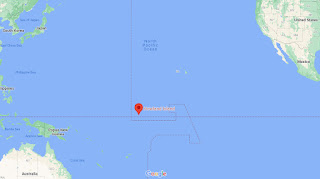View the Index of Unit Histories
"Golden Hawks"
(Original article written by Jim Broumley, 5/15/2008)
In 1965, as the U.S. Army's involvement in Vietnam grew deeper, the ubiquitous use of the helicopter in the new "frontless" war became apparent. The Army had to have the means to maintain tactical and administrative control over all of its divisional and non-divisional aviation assets in the country. It did this with the creation of the 1st Aviation Brigade, the Golden Hawks.
1st Aviation Brigade SSI
In April 1965 the USA Aviation Brigade (Provisional) was activated in Vietnam with the existing 13th, 14th, 52nd, and 145th Aviation Battalions reporting to it. In August it became the 12th Aviation Group. Now doubled in size, the 12th Aviation Group was used as the basis to form the 1st Aviation Brigade in March 1966.
The Brigade served in Vietnam from May 1966 until March 1973. At its peak strength, the 1st AVN BDE had over 4,000 rotary and fixed-wing aircraft and 24,000 soldiers assigned. The organization became so large that the Brigade was organized into Aviation Groups. The Groups were then assigned Aviation Battalions and Companies, or Squadrons and Troops in the case of Cavalry units. The 1st Aviation Brigade was responsible for forty percent of the Army's helicopter assets and one hundred percent of its fixed-wing assets in Vietnam. In 1969, the brigade carried more than 6.5 million troops in more than 4 million sorties, flying more than 1.5 million hours to accomplish this monumental mission. Units of the Brigade performed brilliantly throughout the war and were instrumental in inventing and perfecting the art of helicopter warfare. Upon withdrawal from the Republic of South Vietnam, the Golden Hawks were sent to Fort Rucker, Alabama, to serve as a training brigade where they are still stationed today.
During the Vietnam War, the 1st Aviation Brigade and its support units constituted the largest operational aviation brigade in the Army. As such, the Golden Hawks were involved in practically every operation of note during the conflict. However, Lam Son 719 stands out because it involved heavy use of aviation assets, including the 1st Aviation Brigade. This Operation demonstrates both the successes and the failures in the use of helicopters during the, up to that date, unconventional war that was Vietnam. It is also demonstrative of the sacrifices made by the aircrews who manned them.
Operation Lam Son 719 involved a mass use of Army helicopters. The Operation took place from February 8th to March 25, 1971. Its mission was the coordinated insertion of South Vietnamese troops by air and armored units into Laos. While ground troops were strictly South Vietnamese, the United States provided logistical, aerial, and artillery support. The intent of the operation was to drive the North Vietnamese regular army out of areas of Laos contiguous to the South Vietnamese border.
As United States forces were not allowed to operate on the ground inside of Laos, the American portion of the mission was given the name Operation Dewey Canyon II. American lift helicopters ferried South Vietnamese troops into Laos. Helicopter gun-ships provided close air support for the South Vietnamese ground forces (ARVN) and destroyed an estimated 88 North Vietnamese P-76 tanks. Unfortunately, the operation was considered a failure on the ground when the South Vietnamese forces took heavy losses in their withdrawal from Laos. Combined U.S./ARVN helicopter losses totaled 108 destroyed and 618 damaged. During Lam Son 719 American helicopters had flown more than 160,000 sorties and 19 U.S. Army aviators had been killed, 59 were wounded, and 11 were missing at its conclusion. Many of the helicopters were shot down by Soviet-built 37-millimeter (mm), radar-directed, antiaircraft guns.
During Lam Son 719, Army helicopter pilots often were forced to fly in what at best could be discerned as marginal weather. Helicopters serving in the Vietnam War did not have tactical radar on board, so pilots had a difficult time flying during inclement weather. The fact that more helicopters were not lost during this operation was due, in large measure, to the flying skills and bravery of these pilots. Lam Son 719 itself incurred a great deal of controversy inside and outside of military circles as to its efficacy and results. The operation served as a lessons-learned report for the Army. None of which detracts from the hard work and courage of the aircrews who wore the Golden Hawks shoulder patch.
Today, the 1st Aviation Brigade is responsible for training aviation officers, warrant officers, and soldiers with a variety of aviation military occupational specialties (MOS). The Golden Hawks Brigade Headquarters and most subordinate units are stationed at the United States Army Aviation Center, Fort Rucker, Alabama. The 1st Aviation Brigade commands four distinctly different battalions, each with a unique mission to train young soldiers and officers - the 1st Battalion, 13th Aviation Regiment; the 1st Battalion, 145th Aviation Regiment; 1st Battalion, 210th Aviation Regiment; and the Unmanned Aircraft Systems Training Battalion at Fort Huachuca, Arizona. Additionally, the 1st Aviation Brigade commands the U.S. Army's Survival, Evasion, Resistance, and Escape Level C Training Detachment. Along with its many command responsibilities, logistical support requirements, and administrative duties, the Brigade's primary mission is to train and develop future aviation warfighting leaders.





